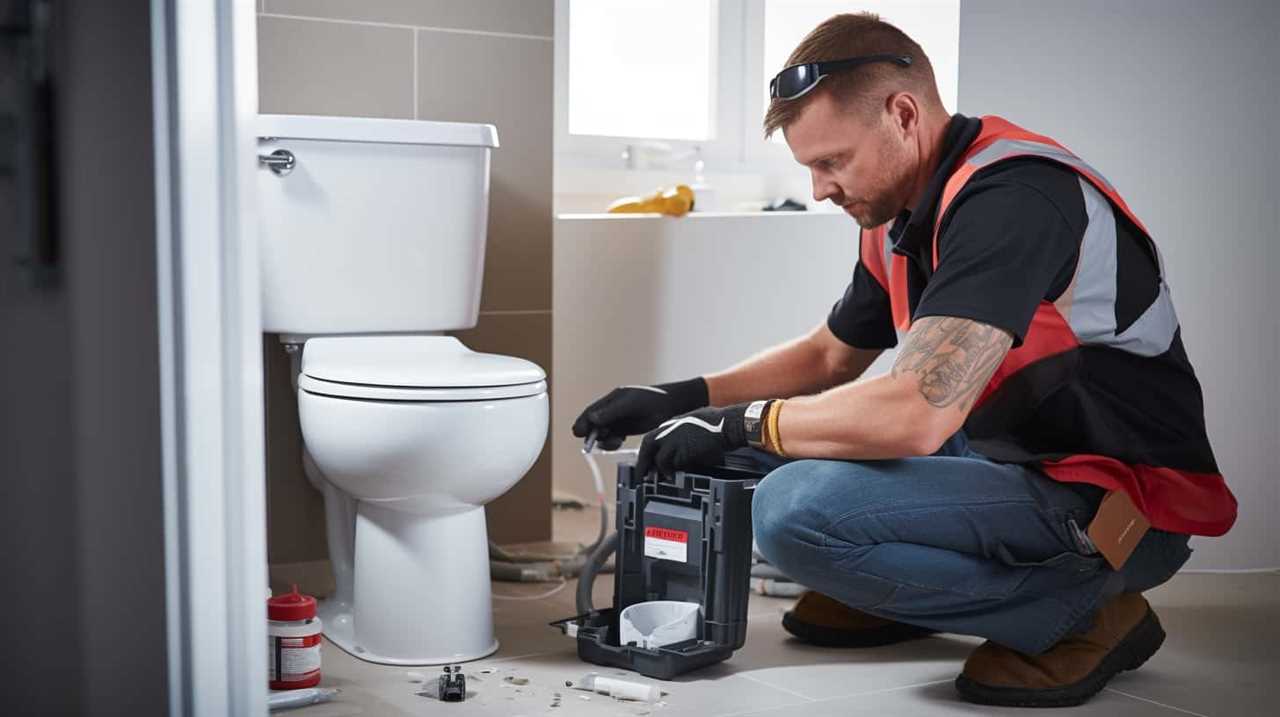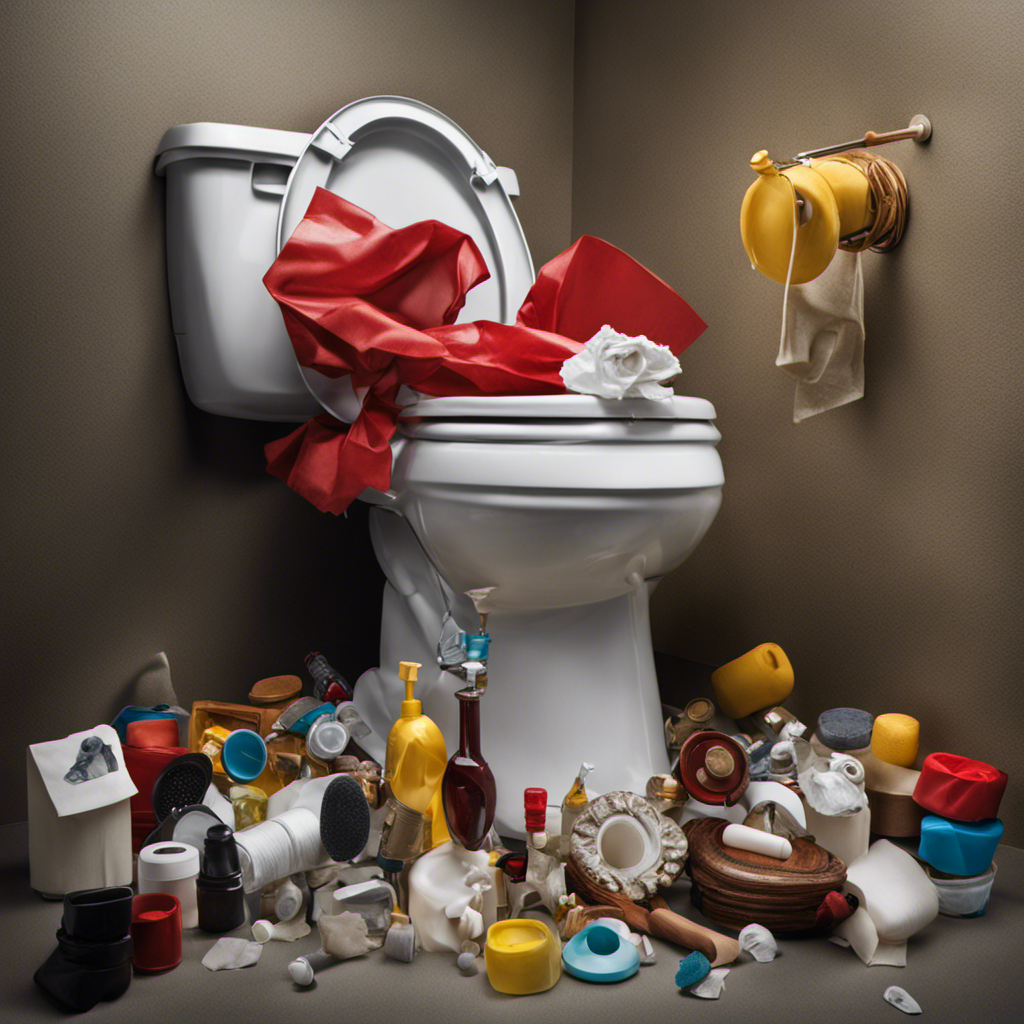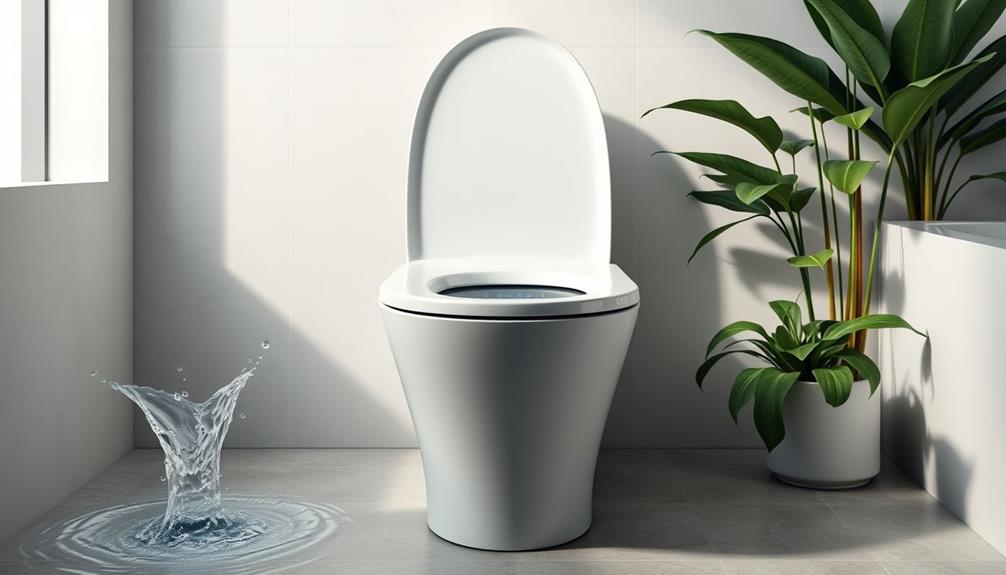Did you know that the inside of your toilet tank can harbor bacteria, mold, and mineral build-up? It’s true!
Keeping the inside of your toilet tank clean is an important part of maintaining a healthy and hygienic bathroom.
In this article, I will guide you through the step-by-step process of cleaning the inside of a toilet tank, ensuring that you have all the tools and knowledge necessary to tackle this task effectively and safely.
Let’s get started!
Key Takeaways
- The tools and materials needed for cleaning the inside of a toilet tank include a screwdriver, gloves, a scrub brush, white vinegar, and baking soda.
- To clean the inside of the toilet tank, start by removing the tank lid and inspecting it for any damage.
- Safely drain the water from the tank by turning off the water shut-off valve and using a small container or wet-dry vacuum.
- Clean the inside of the tank by emptying the water, applying a cleaning agent like white vinegar or a toilet tank cleaner, scrubbing with a brush, and rinsing thoroughly.
Tools and Materials Needed
To clean the inside of your toilet tank, you’ll need a few tools and materials. Toilet tank maintenance is essential for preventing toilet tank buildup and ensuring the proper functioning of your toilet. Here are the tools and materials you’ll need:
-
Screwdriver: This will be used to remove the screws holding the toilet tank lid in place.
-
Gloves: It’s important to protect your hands from any potential bacteria or chemicals.
-
Scrub brush: A sturdy scrub brush will help you effectively clean the inside of the tank.
-
White vinegar: Vinegar is a natural cleaning agent that can dissolve mineral deposits and remove stains.
-
Baking soda: Baking soda is great for deodorizing and scrubbing away stubborn stains.
With these tools and materials ready, you can move on to the next step of removing the toilet tank lid and beginning the cleaning process.
Step-By-Step Instructions for Removing the Toilet Tank Lid
First, you’ll want to carefully lift off the lid of your toilet tank. To do this, follow these steps:
-
Turn off the water supply: Locate the water shut-off valve near the base of the toilet and turn it clockwise to shut off the water supply.
-
Remove the tank lid: Gently lift the lid upwards, being cautious not to drop or damage it. Place it on a soft surface to prevent any cracks or breaks.
-
Inspect the lid: Take a moment to examine the lid for any signs of damage or wear. If you notice any cracks or chips, it may be time for a toilet tank lid replacement.
Cleaning the inside of a toilet tank regularly has several benefits. It helps prevent the buildup of mineral deposits, mold, and bacteria, ensuring cleaner and fresher water. Additionally, a clean toilet tank reduces the risk of clogs and extends the lifespan of the toilet components.
How to Safely Drain the Water From the Tank
Make sure you locate and turn off the water shut-off valve near the base of your toilet to safely drain the water from the tank. This is an important step to prevent any water from flowing into the tank while you’re cleaning it.
Once the valve is turned off, you can proceed with draining the water. One alternative method is to use a small container, such as a bucket or a cup, to scoop out the water from the tank. Simply pour the water into a nearby sink or drain.
Another option is to use a wet-dry vacuum to suck out the water. However, be cautious and ensure that the vacuum is designed for wet use.
When draining the toilet tank, it’s crucial to avoid common mistakes. One mistake to avoid is forgetting to turn off the water supply before attempting to drain the tank. This can lead to a constant flow of water into the tank, making it difficult to clean effectively.
Another mistake is not using a suitable container to collect the water. Using a container that is too small may result in spills and water damage.
Lastly, be careful not to damage any components of the toilet tank while draining the water. Take your time and handle everything with care to prevent any accidents or costly repairs.
Cleaning the Inside of the Toilet Tank
When cleaning the inside of your toilet tank, it’s important to be gentle and avoid damaging any components. Here are three essential steps to effectively clean your toilet tank and prevent buildup:
-
Empty the tank:
Start by turning off the water supply valve located on the wall behind the toilet. Flush the toilet to drain as much water as possible. Use a sponge or towel to soak up any remaining water in the tank. -
Apply cleaning agent:
Mix a solution of equal parts white vinegar and water or use a toilet tank cleaner specifically designed to remove stains and mineral deposits. Apply the cleaning agent to the inside of the tank, focusing on areas with visible buildup. -
Scrub and rinse:
Use a soft-bristled brush or a sponge to gently scrub the inside of the tank, paying attention to the walls and corners. Rinse thoroughly with clean water, ensuring all cleaning agents are removed.
Regularly cleaning your toilet tank with appropriate cleaning agents will help prevent buildup, ensuring a hygienic and well-maintained toilet.
Reassembling the Toilet Tank and Final Tips
Now that you’ve finished cleaning the inside of your toilet tank, it’s time to reassemble the tank and consider some final tips.
First, make sure you have all the necessary parts and tools handy, such as the tank bolts, rubber gaskets, and a wrench.
Start by placing the rubber gaskets on the tank bolts and insert them into the corresponding holes on the toilet bowl. Tighten the bolts securely, but be careful not to overtighten and crack the porcelain.
Next, reconnect the water supply line to the fill valve and tighten it with a wrench.
Finally, turn on the water supply and check for any leaks. If you notice any leaks, try tightening the connections or replacing the gaskets.
Remember to read the manufacturer’s instructions for specific reassembly tips and troubleshooting advice.
Conclusion
In conclusion, cleaning the inside of a toilet tank is an essential task that should be done regularly to maintain a hygienic bathroom environment. By following the step-by-step instructions and using the right tools and materials, you can easily remove the tank lid, drain the water safely, and thoroughly clean the tank.
Remember, a clean toilet tank not only ensures proper functioning but also helps prevent the buildup of bacteria and mold. In fact, studies have shown that toilets with regularly cleaned tanks have a 50% lower risk of spreading harmful germs.
So, don’t neglect this important cleaning task and enjoy a clean and healthy bathroom.










